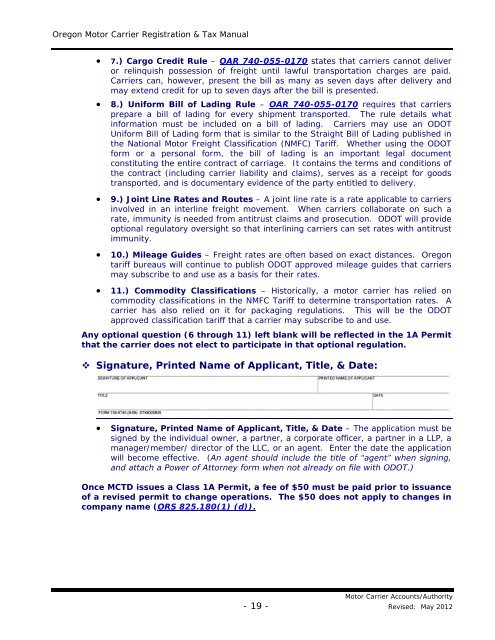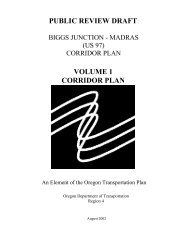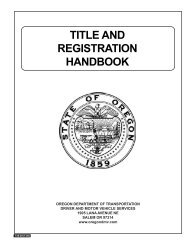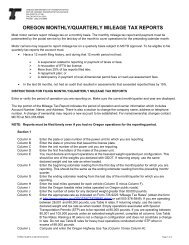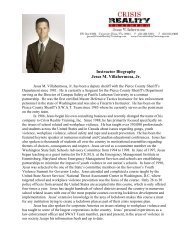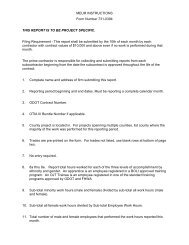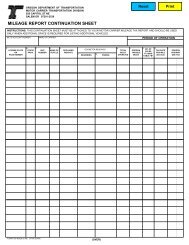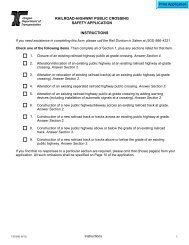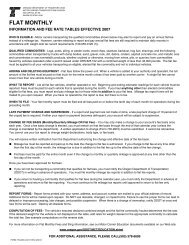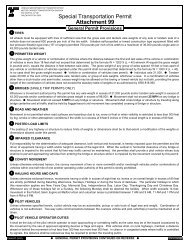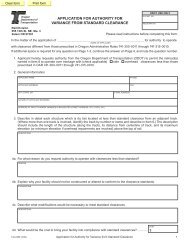oregon motor carrier registration & tax manual - Oregon Department ...
oregon motor carrier registration & tax manual - Oregon Department ...
oregon motor carrier registration & tax manual - Oregon Department ...
You also want an ePaper? Increase the reach of your titles
YUMPU automatically turns print PDFs into web optimized ePapers that Google loves.
<strong>Oregon</strong> Motor Carrier Registration & Tax Manual<br />
<br />
<br />
<br />
<br />
<br />
7.) Cargo Credit Rule – OAR 740-055-0170 states that <strong>carrier</strong>s cannot deliver<br />
or relinquish possession of freight until lawful transportation charges are paid.<br />
Carriers can, however, present the bill as many as seven days after delivery and<br />
may extend credit for up to seven days after the bill is presented.<br />
8.) Uniform Bill of Lading Rule – OAR 740-055-0170 requires that <strong>carrier</strong>s<br />
prepare a bill of lading for every shipment transported. The rule details what<br />
information must be included on a bill of lading. Carriers may use an ODOT<br />
Uniform Bill of Lading form that is similar to the Straight Bill of Lading published in<br />
the National Motor Freight Classification (NMFC) Tariff. Whether using the ODOT<br />
form or a personal form, the bill of lading is an important legal document<br />
constituting the entire contract of carriage. It contains the terms and conditions of<br />
the contract (including <strong>carrier</strong> liability and claims), serves as a receipt for goods<br />
transported, and is documentary evidence of the party entitled to delivery.<br />
9.) Joint Line Rates and Routes – A joint line rate is a rate applicable to <strong>carrier</strong>s<br />
involved in an interline freight movement. When <strong>carrier</strong>s collaborate on such a<br />
rate, immunity is needed from antitrust claims and prosecution. ODOT will provide<br />
optional regulatory oversight so that interlining <strong>carrier</strong>s can set rates with antitrust<br />
immunity.<br />
10.) Mileage Guides – Freight rates are often based on exact distances. <strong>Oregon</strong><br />
tariff bureaus will continue to publish ODOT approved mileage guides that <strong>carrier</strong>s<br />
may subscribe to and use as a basis for their rates.<br />
11.) Commodity Classifications – Historically, a <strong>motor</strong> <strong>carrier</strong> has relied on<br />
commodity classifications in the NMFC Tariff to determine transportation rates. A<br />
<strong>carrier</strong> has also relied on it for packaging regulations. This will be the ODOT<br />
approved classification tariff that a <strong>carrier</strong> may subscribe to and use.<br />
Any optional question (6 through 11) left blank will be reflected in the 1A Permit<br />
that the <strong>carrier</strong> does not elect to participate in that optional regulation.<br />
Signature, Printed Name of Applicant, Title, & Date:<br />
<br />
Signature, Printed Name of Applicant, Title, & Date – The application must be<br />
signed by the individual owner, a partner, a corporate officer, a partner in a LLP, a<br />
manager/member/ director of the LLC, or an agent. Enter the date the application<br />
will become effective. (An agent should include the title of “agent” when signing,<br />
and attach a Power of Attorney form when not already on file with ODOT.)<br />
Once MCTD issues a Class 1A Permit, a fee of $50 must be paid prior to issuance<br />
of a revised permit to change operations. The $50 does not apply to changes in<br />
company name (ORS 825.180(1) (d)).<br />
Motor Carrier Accounts/Authority<br />
- 19 - Revised: May 2012


